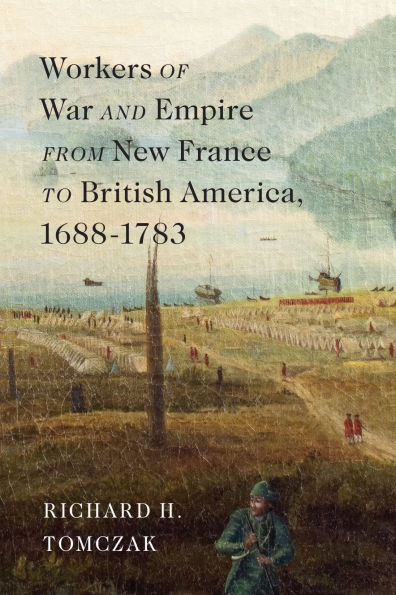Workers of War and Empire from New France to British America, 1688-1783
During the eighteenth century, the French and British empires mobilized thousands of workers in what is now Canada through a system of mandatory labour known as corvée. Rooted in the feudal obligations of peasants to their landlords, corvée was introduced by the French, and later exploited by the British, becoming part of their arsenal during the American revolutionary wars. Richard Tomczak chronicles the transformation of the corvée system over a century. Under the French regime, corvée was mostly directed towards local public works projects, such as building roads and bridges. After the conquest of Quebec, the system assumed greater scope. The British realized their need for labour in an underpopulated region and co-opted corvée for their imperial ends, requiring the male inhabitants of New France to work in state enterprises such as iron mining and logging, and conscripting Canadians to support their military expeditions during the American Revolution. This surging demand for labour in the service of the state precipitated widespread protests in New France, forcing the governor to ratify a new provincial code regulating the use of corvée. Tomczak also sheds light on the rhythms of French Canadians’ working lives, their understanding of corvée obligations, and the ways they expressed resistance when the system became burdensome. Exploring a lesser-known aspect of the labour arrangements that propped up the colonial state, Workers of War and Empire from New France to British America, 1688–1783 puts French Canadian workers front and centre in the history of early Canada.
1146445640
Workers of War and Empire from New France to British America, 1688-1783
During the eighteenth century, the French and British empires mobilized thousands of workers in what is now Canada through a system of mandatory labour known as corvée. Rooted in the feudal obligations of peasants to their landlords, corvée was introduced by the French, and later exploited by the British, becoming part of their arsenal during the American revolutionary wars. Richard Tomczak chronicles the transformation of the corvée system over a century. Under the French regime, corvée was mostly directed towards local public works projects, such as building roads and bridges. After the conquest of Quebec, the system assumed greater scope. The British realized their need for labour in an underpopulated region and co-opted corvée for their imperial ends, requiring the male inhabitants of New France to work in state enterprises such as iron mining and logging, and conscripting Canadians to support their military expeditions during the American Revolution. This surging demand for labour in the service of the state precipitated widespread protests in New France, forcing the governor to ratify a new provincial code regulating the use of corvée. Tomczak also sheds light on the rhythms of French Canadians’ working lives, their understanding of corvée obligations, and the ways they expressed resistance when the system became burdensome. Exploring a lesser-known aspect of the labour arrangements that propped up the colonial state, Workers of War and Empire from New France to British America, 1688–1783 puts French Canadian workers front and centre in the history of early Canada.
44.95
In Stock
5
1

Workers of War and Empire from New France to British America, 1688-1783
264
Workers of War and Empire from New France to British America, 1688-1783
264
44.95
In Stock

Product Details
| ISBN-13: | 9780228023623 |
|---|---|
| Publisher: | McGill-Queens University Press |
| Publication date: | 02/11/2025 |
| Series: | McGill-Queen's Studies in Early Canada / Avant le Canada , #10 |
| Pages: | 264 |
| Product dimensions: | 6.00(w) x 9.00(h) x 0.80(d) |
About the Author
From the B&N Reads Blog
